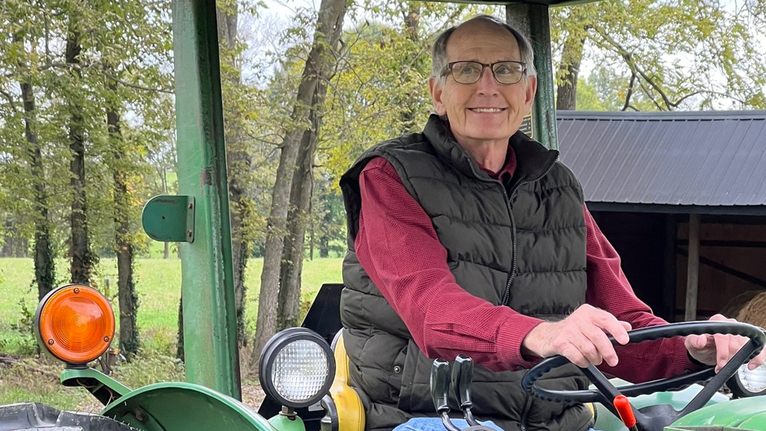“I owe them my life.”
Dr. Coates fondly remembers the first time he talked to Dr. Shah. It was a phone call on a Saturday.
“What a fine person he is! He is just a wonderful person,” Dr. Coates said. “He had me come up for an evaluation. By the time I was up there, I had lesions all through my liver.”
Dr. Coates continued, “Dr. Shah said he would have transplanted me after my first surgery. I had hoped that I was not going to be a cancer patient anymore – but I was going to be a liver transplant patient.”
The first step was to finally bring the liver cancer to a halt. The UC Health team determined that the radiation treatment he received in Kentucky wasn’t strong enough.
“When Dr. Coates came to us, his CT scan showed dozens of liver cancer lesions throughout his liver. In Kentucky, he had received multiple interventional treatments to his liver, which were directed at only a some of the cancers and used radiation doses that were too low,” explained Ross Ristagno, MD, UC Health interventional radiologist and associate professor in the Department of Radiology at the UC College of Medicine.
Dr. Coates needed more aggressive interventional radiology treatments urgently to control the aggressive cancer and qualify him for liver transplantation. Dr. Ristagno explained, “Dr. Coates underwent radioembolization procedures to both lobes of his liver. Both treatments were performed at UC Health as outpatient procedures and were well tolerated by him.”
UC Health Interventional Radiology physicians have specialized in performing minimally invasive liver cancer therapies for many years. Their team of nine interventional radiologists have trained in the best medical centers in the country and bring their expertise to UC Health. The team was the first in Ohio to perform liver cancer radioembolization in adults and the first in the country to perform this procedure in children.
According to Dr. Ristagno, close collaboration between interventional radiology physicians and their UC Health Transplant colleagues “allows us to achieve amazing results, such as in Dr. Coates’ case and with other patients.”
“After four weeks, it showed all of my lesions were necrotic (dead).” Dr. Coates said. “I had this little window to get transplanted.”
An additional scan for cancer showed his cancer had not spread beyond the liver.
After years of being told he was too old, he was finally on the transplant list at UC Health.
The wait wasn’t long. The same day he was placed on the list, the phone rang when he got home.
“I got a call that night to come back to Cincinnati,” Dr. Coates said.
Fred and his family did not hesitate. His daughter, Jennifer, a registered nurse, immediately booked a flight from her home on the west coast to see her dad through the operation.


